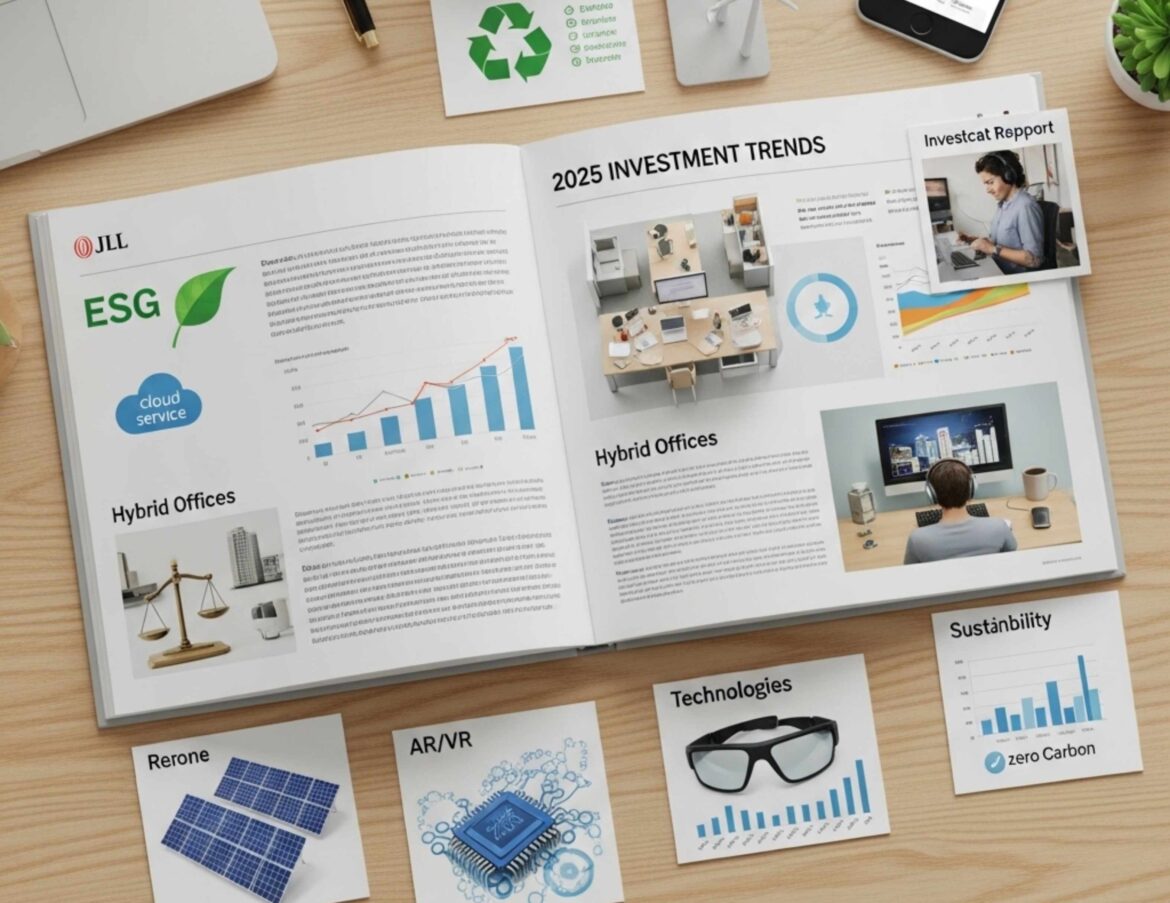Global real estate advisory firm Jones Lang LaSalle (JLL) has released its latest report for the first half of 2025, shedding light on the most significant investment trends in the commercial real estate (CRE) sector. The comprehensive document outlines how investors are adapting to evolving economic conditions, geopolitical shifts, and changes in demand across asset classes.
Total Investment Volume and Market Dynamics
According to JLL, global investment volume in commercial real estate reached approximately €450 billion in the first five months of 2025, marking an 8% increase compared to the same period in 2024. The most active markets include the U.S., Germany, the U.K., France, and Japan. Europe is showing signs of moderate recovery, supported by improving macroeconomic indicators and more predictable monetary policy.
The report highlights that investors have become increasingly cautious, favoring assets that offer steady income streams and inflation protection. A growing preference is observed for properties with environmental certifications (LEED, BREEAM) and those tied to logistics and technology infrastructure.
Shift Toward Reliability and Core Assets
Since 2023, investor sentiment has shifted from speculative strategies to a stronger focus on income stability. JLL states that 65% of transactions in 2025 target core and core-plus assets, while opportunistic deals have declined in relative volume.
The most sought-after asset classes include:
- Logistics warehouses: especially those near transportation hubs and major urban areas. Rents in this segment rose by an average of 6% year-over-year.
- Data centers: continue to attract institutional capital due to ongoing demand for digital infrastructure.
- Multifamily rental housing: with elevated mortgage rates, renting has become a more attractive option for many, boosting this segment’s returns.
- Class A offices in CBDs: despite hybrid work trends, ESG-certified premium office buildings remain in high demand.
ESG as a Primary Investment Criterion
JLL emphasizes that ESG (Environmental, Social, and Governance) considerations are no longer a secondary factor, but a leading investment filter. In 2025, more than 74% of institutional investors include ESG standards as a key part of their decision-making process. Investors are prioritizing low-carbon buildings, renewable energy integration, and smart building technologies.
Notable ESG features highlighted in the report:
- Solar panel installations and heat recovery systems;
- WELL Building Standard certifications;
- EV charging stations integrated into office facilities.
Properties with ESG accreditations are reportedly priced 10–15% higher but offer greater liquidity and lower vacancy risk.
Investment by Region
The geographic distribution of CRE investments in 2025 is as follows:
| Region | Investment Volume (€ Billion) | Share of Global Market |
|---|---|---|
| United States | 165 | 36% |
| Europe | 140 | 31% |
| Asia | 95 | 21% |
| Middle East | 25 | 6% |
| Latin America | 15 | 3% |
Europe is steadily regaining investor confidence following the volatility of 2023–2024. Germany, France, and the Netherlands have shown particularly strong performance.
Yield and Cap Rate Trends
JLL projects that major central banks across developed economies may begin easing monetary policy in the second half of 2025. This could lead to a 10–30 basis point decline in cap rates for prime assets.
Average Yields by Sector (Q2 2025):
- London office assets – 4.2%
- Berlin multifamily housing – 3.6%
- Paris logistics – 4.9%
- Amsterdam data centers – 5.3%
The report notes a widening yield gap between ESG-compliant, high-quality properties and outdated assets, which are becoming increasingly difficult to reposition.
Surge in Cross-Border Investment
Cross-border investment activity now accounts for 38% of total transaction volume, with strong inflows in Europe and the Asia-Pacific region. The top sources of international capital include the U.S., Canada, UAE, and Singapore.
Funds are diversifying geographically, targeting politically stable countries with favorable tax regimes. Among the most attractive destinations: Poland, Portugal, South Korea, and the UAE.
Alternative Real Estate Sectors on the Rise
JLL identifies increasing interest in alternative commercial real estate segments:
- Student housing in major university cities across Europe, offering yields above 6% and low vacancy rates;
- Healthcare facilities such as outpatient clinics and senior living centers, with secure, long-term rental income;
- Hospitality assets, especially in tourism-heavy markets, which are showing strong post-pandemic recovery.
Key Risks and Challenges
Despite signs of recovery, JLL highlights several ongoing risks:
- Geopolitical instability, including conflict zones and trade tensions;
- Uneven rent recovery across asset classes and regions;
- Higher retrofit costs to bring older assets up to environmental standards;
- Overhang in secondary office stock, with vacancy rates exceeding 20% in some cities.
The report advises investors to focus on “quality-first” strategies and prioritize sectors with proven demand.
Conclusion
JLL’s 2025 report confirms that the commercial real estate market is returning to growth but is undergoing a structural shift toward sustainability, technology integration, and socially beneficial assets. Investors are increasingly focused on quality, ESG compliance, and long-term resilience.
With ESG becoming a baseline requirement and cross-border capital flows rising, the market is moving away from speculative tactics toward more defensive, risk-managed strategies. The investment landscape of 2025–2026 will be shaped by those who invest in reliability, energy efficiency, and strategic foresight.
In an uncertain global environment, the winning formula lies in prioritizing stability, adaptability, and sustainability in every decision.

